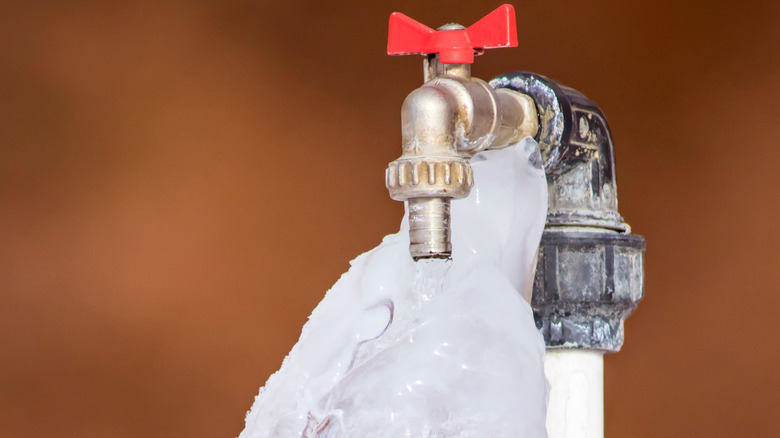Important Advice for Preventing Frozen Pipes in Cold Weather Seasons
Important Advice for Preventing Frozen Pipes in Cold Weather Seasons
Blog Article
Here further down you can get a bunch of helpful points all about 6 Ways to Prevent Frozen Pipes.

Cold weather can damage your plumbing, especially by freezing pipelines. Below's exactly how to stop it from taking place and what to do if it does.
Introduction
As temperatures decrease, the threat of icy pipelines rises, potentially bring about pricey repair services and water damage. Comprehending just how to prevent icy pipes is vital for house owners in chilly environments.
Prevention Tips
Insulating vulnerable pipelines
Cover pipelines in insulation sleeves or utilize warmth tape to secure them from freezing temperature levels. Focus on pipes in unheated or external areas of the home.
Heating methods
Maintain interior rooms effectively warmed, especially locations with pipes. Open cabinet doors to allow cozy air to flow around pipes under sinks.
Just how to identify icy pipelines
Look for reduced water flow from faucets, uncommon smells or sounds from pipes, and noticeable frost on exposed pipes.
Long-Term Solutions
Structural modifications
Take into consideration rerouting pipes far from exterior walls or unheated locations. Include additional insulation to attic rooms, cellars, and crawl spaces.
Updating insulation
Purchase premium insulation for pipes, attic rooms, and walls. Appropriate insulation assists maintain constant temperature levels and minimizes the danger of frozen pipes.
Protecting Outdoor Pipes
Yard hoses and outside taps
Separate and drain pipes garden hose pipes before winter. Mount frost-proof faucets or cover outside faucets with shielded caps.
Recognizing Icy Pipelines
What triggers pipes to freeze?
Pipelines freeze when subjected to temperatures listed below 32 ° F (0 ° C) for extended periods. As water inside the pipes ices up, it broadens, taxing the pipeline wall surfaces and possibly causing them to burst.
Threats and problems
Icy pipelines can lead to water system disruptions, home damages, and expensive repairs. Ruptured pipelines can flood homes and trigger extensive architectural damages.
Signs of Frozen Piping
Identifying icy pipelines early can stop them from rupturing.
What to Do If Your Pipelines Freeze
Immediate actions to take
If you believe frozen pipelines, keep faucets open up to alleviate stress as the ice melts. Use a hairdryer or towels soaked in hot water to thaw pipes slowly.
Verdict
Protecting against frozen pipes needs positive procedures and quick reactions. By understanding the reasons, signs, and safety nets, property owners can shield their pipes during winter.
6 Proven Ways to Prevent Frozen Pipes and Protect Your Home
Disconnect and Drain Garden Hoses
Before winter arrives, start by disconnecting your garden hoses and draining any remaining water. Close the shut-off valves that supply outdoor hose bibs and leave the outdoor faucet open to allow any residual water to drain. For extra protection, consider using faucet covers throughout the colder months. It’s also important to drain water from any sprinkler supply lines following the manufacturer’s directions.
Insulate Exposed Pipes
Insulating your pipes is an effective way to prevent freezing. Pipe insulation is readily available at home improvement stores and is relatively inexpensive. Pay close attention to pipes in unheated areas such as the attic, basement, crawl spaces, or garage. Apply foam insulation generously to create a buffer against the cold. You can also wrap your pipes in heat tape or thermostat-controlled heat cables for added warmth.
Seal Air Leaks
Inspect your home for any cracks or openings that could let in cold air. Seal any holes around the piping in interior or exterior walls, as well as the sill plates where your home rests on its foundation. Additionally, make sure to keep your garage door closed unless you’re entering or exiting. Leaving it open creates a significant air leak that can lead to frozen pipes.
Allow Warm Air Circulation
During cold snaps, it’s essential to allow warm air to circulate evenly throughout your home. Leave interior doors ajar to promote better airflow. Open kitchen and bathroom cabinets to help distribute heat consistently around the rooms. If you have small children or pets, be sure to remove any household chemicals or potentially harmful cleaners from open cabinets for safety.
Let Faucets Drip
A small trickle of water can make a big difference in preventing ice formation inside your pipes. When temperatures drop significantly, start a drip of water from all faucets served by exposed pipes. This continuous flow helps prevent the water from freezing. Additionally, running a few faucets slightly can relieve pressure inside the pipes, reducing the chances of a rupture if the water inside does freeze.
https://choateshvac.com/6-proven-ways-to-prevent-frozen-pipes-and-protect-your-home/

As a keen person who reads about How To Avoid Freezing Pipes, I think sharing that piece of content was a great idea. Those who appreciated our article kindly don't forget to pass it around. Thanks for being here. Return soon.
Book Today! Report this page